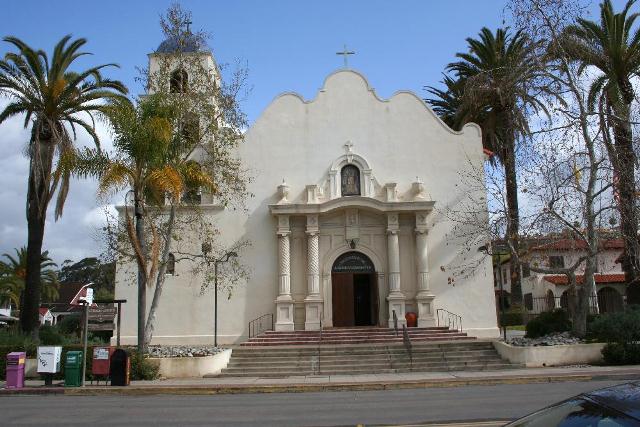- About Archives
- About SAA
- Careers
- Education
- Publications
- Advocacy
- Membership
Hotel Del Coronado; opened 1888 |
In September 1542, Portuguese explorer Juan Rodriguez Cabrillo sailed into what is now San Diego Bay. He rested there for a while before continuing his expedition on behalf of Spain up the California coast. Little did he know that, in time, San Diego would grow into a cultural medley that includes Spanish, Mexican, and Asian influences, along with that of the Kumeyaay and other indigenous people of the region. But it is, perhaps, Mexico’s influence that is the most thoroughly intertwined in San Diego today. This is most evident in Old Town San Diego, which was designated a California historic park in 1968.
Today, Old Town recreates life in San Diego from 1821 to 1872 during the Mexican and early American periods. Composed of shops, restaurants, museums, historic sites, artisan workshops, galleries, and a professional theater, it is one of San Diego’s largest and most visited attractions. Many historic buildings dot the narrow streets, including the Whaley House, which holds the infamous distinction of being one of the most haunted houses in the United States.
Old Town Historic State Park is the “birthplace” of not only San Diego, but of California as well. It was here that Father Junípero Serra built the first Spanish mission in California that would accompany the Presidio (military fort) overlooking the town in 1769. After the Mexican War of Independence in the early 1800s, Old Town became the commercial and governmental hub of the San Diego region. Retired soldiers cultivated plots of land outside the Presidio boundaries, and a plaza was built in the early 1820s.
By 1841, a new kind of immigrant appeared in Old Town: pioneers from the Midwest seeking to establish farms and homes, propelled by a staunch belief in Manifest Destiny. In July 1846, at the outset of the Mexican-American War, a party of American Marines raised the American flag in Old Town Plaza and battled native, Spanish-speaking Californios for rights to the land. In 1848, the Treaty of Guadalupe Hidalgo formally brought San Diego into the United States. Old Town continued to grow in the 1850s and 1860s. Americans built new wooden structures in the New England style and remodeled some of the older adobe buildings. In the 1870s the focus of development shifted as newcomer Alonzo Horton promoted development of present-day downtown San Diego and many Americans began moving south into the New Town area, closer to the bay. Despite this, Old Town remains a symbol of San Diego’s origin, including its many historical sites and places of interest. Mexican heritage still plays a major role throughout the region and continues to heavily influence the city’s culture.
According to the 2010 census, a third of all San Diegans consider themselves of Hispanic or Latino origin, and well over 80% of those consider themselves Mexican. Tijuana, the largest city in Baja California and one of Mexico’s leading industrial and financial centers, sees thousands of San Diegans commute there every day— and vice versa. In fact, many families are bi-national and, because of the fluidity of this arbitrary border, they lead bi-national lives. Tijuana continues to be one of the fastest growing cities in Mexico, and multiple San Diego/ Tijuana organizations exist on both sides of the border to promote regional collaboration and innovation.
Mexico has left an indelible cultural mark on the region. In architecture, Spanish and Mexican themes adorn many San Diego buildings, notably in Balboa Park. Mexican art, such as paintings and murals influenced by Diego Rivera, Jose Clemente Orozco, David Alfaro Siquerios, and Frida Kahlo, can be seen at local museums, on campuses, and in Barrio Logan’s historic Chicano Park. Additionally, San Diego celebrates several significant Mexican holidays, including Cinco de Mayo on May 5 (of course!), Independence Day on September 16, and Día de los Muertos (Day of the Dead) on November 1 and 2.
 |
The Catholic Church of the Immaculate Conception, Old Town, San Diego (Alan Renga) |
On a more personal level, visitors to San Diego cannot help but experience Mexico’s influence in the area via their taste buds. It is nearly impossible to find a San Diego street that doesn’t offer a Mexican restaurant. Whether an upscale eatery or an unassuming taco shop—chances are, the food will be unique and exceptional!
— Brandon Oswald and Alan Renga, 2012 Host Committee
Ardys Kozbial, Chair
University of California, San Diego
Aubrey Carrier
Wells Fargo & Co. Archives
Jenny Cashman
Crossroads School
Eric Chin
NBCUniversal
Steven Coy
University of California, San Diego
Cristela Garcia-Spitz
University of California, San Diego
Timothy Gladson
Geothermal Resources Council
Helene Idels
Escondido Public Library
Amy Jankowski
San Diego Zoo Global
Jane Kenealy
San Diego Historical Society
Nancy Lenoil
California State Archives
Diane Maher
University of San Diego
Kelly McAnnaney
University of California, San Diego
Stephanie Mirkin
San Diego History Center
Brandon Oswald
Island Culture Archival Support
Katrina Pescador
San Diego Air & Space Museum
Alan Renga
San Diego Air & Space Museum
Annie Ross
University of California, San Diego
Jeffrey Schermer
Quintiles, Inc.
Bradley Westbrook
University of California, San Diego
Kim Schwenk
University of California, San Diego